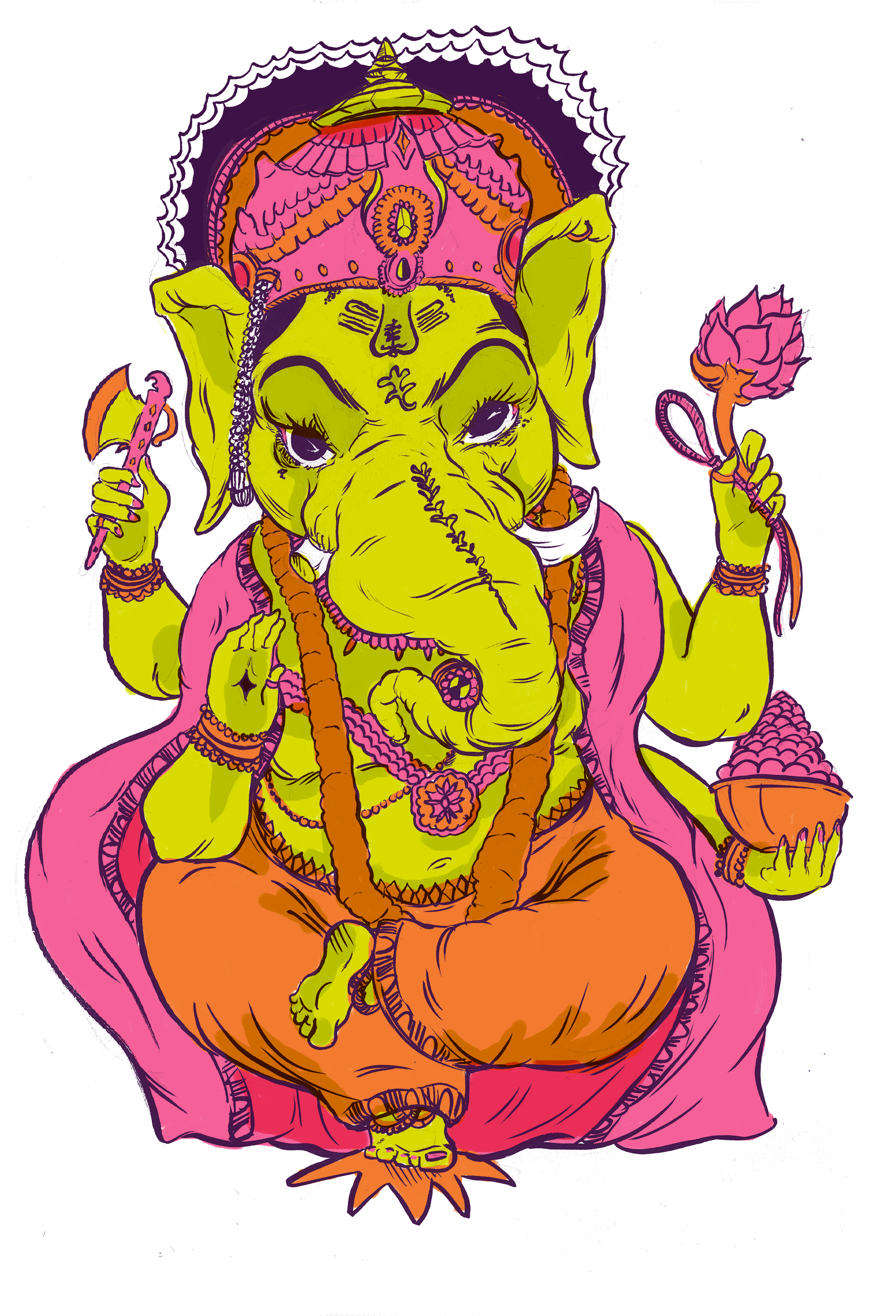

Madam Mythos
India

Ganesha
Gan means group. The universe is a group of atoms and different energies. This universe would be in chaos if there was no supreme law governing these diverse groups of entities. The Lord of all these groups of atoms and energies is Ganesha.
Origins
Ancient India
Home
The universe
Alias
Remover of Obstacles
Alias
Remover of Obstacles
The Legend (taken directly from chopra.com/)
"Ganesha is one of the most distinctive Hindu deities with his large elephant head and pot-bellied human body. He plays a dual role of a supreme being powerful enough to remove obstacles and ensure success or create obstructions for those whose ambition has become destructive.
Ganesha is an archetype who you might call upon when you’re about to embark on a new endeavor. As the Remover of Obstacles and the god of success, Ganesha is honored throughout Indian and in Hindu cultures, at both secular and religious ceremonies. When someone launches a new business or moves into a new home, for example, the elephant-headed god is invoked to bless the venture.
Like other archetypes, Ganesha can be a source of inspiration or act as a role model as you try to achieve a goal. Archetypes are found everywhere, including in art, literature, and movies. Archetypes can be anyone who has traits you admire. In the Vedic tradition, they can play valuable roles in your relationships and spirituality as well as help shape your values and potential. Archetypes represent all of our collective soul’s yearnings, imagination, and deepest desires. And these themes have existed forever."
Physical Description
"In many depictions of Ganesha, he is shown holding a broken tusk in his lower right hand like a pen, perhaps symbolizing the sacrifice he made in feverishly writing the Mahabharata. Another interpretation of the broken tusk is that it’s a symbol of the truth that outward imperfections have nothing to do with inner perfection.
"The Hindu tradition contains many different versions of Ganesha’s origins. Some stories say that Ganesha was born with an elephant head. Most say that he was born with a human head that was later replaced with the elephant head. "

